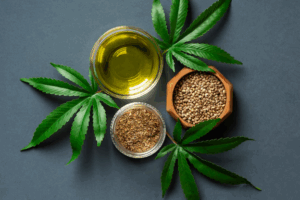Trainwreck Kratom: What It Is & Why People Love It
If you’ve explored the world of kratom, you’ve probably come across Trainwreck Kratom — a name that’s bold, a little mysterious, and often mentioned by
Due to holiday carrier volume, some orders may be delayed.

Fermented kratom is an intriguing variation of the popular botanical supplement, known for its potential health benefits and calming effects. This unique process involves allowing kratom leaves to undergo controlled fermentation, which transforms their chemical composition and potency.
During fermentation, enzymes, and microorganisms interact with the leaves, leading to the breakdown of certain compounds and the development of new ones. This alteration can result in potentially modified effects when consumed. The exact techniques for producing fermented kratom can vary, often involving a combination of drying, aging, and controlled microbial activity. Learn below the different aspects of it.
Fermented kratom, also known as “enhanced” or “fermented” kratom, refers to a process in which kratom leaves are subjected to fermentation after being harvested. This process involves allowing the leaves to undergo natural microbial and enzymatic reactions that can potentially alter the alkaloid content and composition of the leaves.
Fermentation might involve different techniques, such as allowing the leaves to sit in a controlled environment with specific humidity and temperature conditions, or it might involve adding specific ingredients to initiate the fermentation process. The goal of fermentation is often to enhance the alkaloid content, making the resulting kratom product more potent or potentially altering its effects in some way.
Although the phrase ‘fermented kratom’ may evoke a sense of sophistication and uniqueness, this product has a longstanding history. Referred to as Bentuangie kratom as well, fermented kratom enjoys broad popularity among numerous kratom vendors, who promote it as potentially more potent than regular, commonplace kratom strains.
After learning about fermented kratom, you might consider how it’s different. Or How to ferment kratom?
As such fermented kratom neither alter in look, nor in scent, nor in flavor. So, what is the difference?
Let’s look into the reasons:
1) Improved Absorption
In the natural world, fermentation disintegrates plant structures, enhancing the absorption of nutrients into the soil. Interestingly, this heightened absorption principle extends to humans as well. Whether we consider kimchi or kratom, the process of fermentation increases bioavailability, making products easier for the body to digest and utilize.
2) Cultural and Traditional Practices
In some cultures, fermentation is a traditional method for preparing botanicals for consumption. By fermenting kratom, you might be exploring and honoring these cultural practices, adding an extra layer of significance to your kratom use.
3) Altered Alkaloid Profile
You might be thinking – does kratom fermentation remove alkaloids? No, Instead fermentation can potentially lead to changes in the alkaloid composition of kratom. This could result in a modified spectrum of effects, potentially enhancing certain desired outcomes.
In light of the abundant kratom options already available in the market, both cultivators and vendors persist in broadening the range by delving into the herb’s possibilities. This endeavor has given rise to a variety of offerings, including extracts, resins, and notably, fermented kratom. Kratom is available in four different vein colors: red, green, white, and yellow. So, here are the steps to make fermented kratom powder.
Step 1: To begin, mature kratom plants are harvested, extracting their leaves. It’s worth noting that the majority of North America’s kratom supply originates from Southeast Asia, where the plant grows naturally.
Step 2: Following the harvest, the leaves undergo a meticulous drying process within controlled facilities. The dried leaves take one of two paths. The first involves crushing them to create crushed-leaf kratom which is then used in making fermented kratom tea. The remaining kratom is finely ground into powder form used for kratom capsules.
Step 3: For fermented kratom, there’s an additional step. Instead of immediate drying post-harvest, the leaves are placed in a bag and left to ferment for a specific duration.
Step 4: Subsequent to the fermentation phase, farmers proceed based on their personal preference: drying, crushing, pulverizing, or encapsulating the leaves.
The above 4 are the basic steps to get the answer on how is kratom fermented. After performing them, reputable vendors like Club13 Herbals undergo quality testing in their labs and ensure their safety protocols.
Kratom (Mitragyna speciosa) is a tropical tree native to Southeast Asia, and its leaves are known for their potential medicinal and recreational properties. Kratom leaves are often harvested, processed, and consumed for their alkaloid content, which can have various effects on the body.
Subsequently, the kratom is allowed to undergo fermentation within a cool and dim environment for a span of 24 to 72 hours. The process of fermentation involves allowing the freshly harvested kratom leaves to undergo a controlled microbial breakdown, which can lead to changes in the alkaloid profile and overall properties of the final product.
Here are some points to consider regarding fermentation in kratom processing:
While fermentation is not essential to kratom harvesting and post-harvest protocols, it can be used to potentially alter the alkaloid profile and overall properties of kratom leaves. When purchasing Bentuangie kratom, it is crucial to prioritize laboratory tests to mitigate the potential risks associated with mold and mildew contamination.
Read more: Decode the Kratom Lab Test Reports Like a Pro!
Certainly, it is expected to be secure, provided that the correct protocols are adhered to. Prolonged exposure of kratom to moisture might lead to mold growth, while insufficient exposure could hinder full fermentation. This underscores the significance of ensuring the purchase of fermented kratom exclusively from reputable sources.
Whether fermentation is beneficial or necessary depends on factors such as regional practices, consumer preferences, and the desired effects of the final product. If you are interested in using fermented kratom, it’s important to obtain it from a reputable source that follows proper processing and safety guidelines.
If you’ve explored the world of kratom, you’ve probably come across Trainwreck Kratom — a name that’s bold, a little mysterious, and often mentioned by

What Is Kratom Seltzer? Everything You Need to Know Move over, hard seltzers — a new kind of botanical brew is making waves. Kratom seltzer

Top 7 Kratom Capsules That Work (And Where to Get Them) With the growing number of kratom brands entering the market, finding quality capsules you
Why Red Maeng Da Kratom Is the #1 Choice for Daily Buyers In the world of kratom, Red Maeng Da is one of the most

Plants like Kratom and CBD have received significant attention in recent years for their potential to improve overall wellness. As these two substances continue to